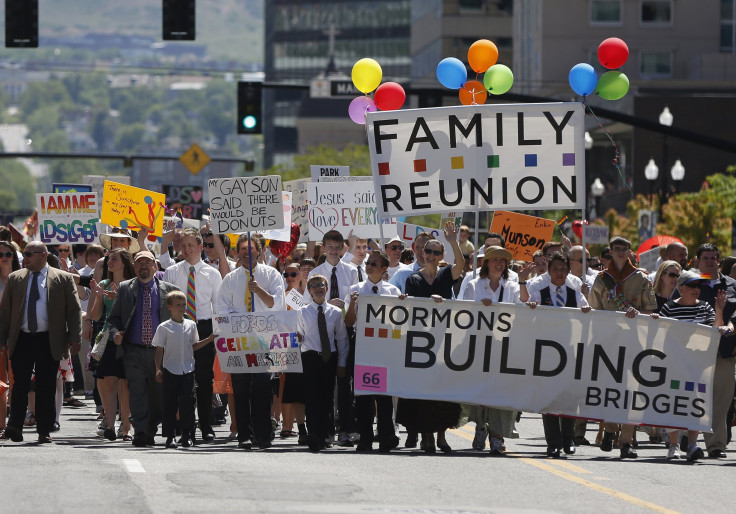The Church And Gay Rights: Mormons Can Be LGBT As Long As They Don't Have Same-Sex Relationships, LDS Says

The Church of Jesus Christ of Latter-day Saints published a new website Tuesday titled “Mormon and Gay” that seemingly represented a shift in the Mormon Church’s stance on homosexuality. The website’s home page featured videos of gay and lesbian people describing how being Mormon allowed them to find fulfillment in life without entering same-sex marriages.
The message does not present any major changes to the church's stringent position on LGBT rights. Last year, the church declared that anyone in a same-sex marriage was an apostate, and their children cannot be baptized unless they are over 18 and have renounced their parents’ relationship and moved out of their house, The Washington Post reported.
“They’re loved. They’re supported. They’re part of the church,” L. Whitney Clayton, who served on the Presidency of the Seventy, making him one of the foremost authorities in the Mormon Church, told the Washington Post this week. “We want them to feel happy and included in the kingdom of God.”
The last time the church published a website describing its relationship with homosexuality in 2012, it was titled, “Mormons and Gays,” accentuating an inherent message of exclusiveness between the parties, according to CNN. This time, the two groups were presented as one and the same.
“Above and beyond getting into the content of the website, the URL is absolutely fantastic—its’s an inclusive statement,” Mitch Mayne, an openly gay Mormon and blogger, told CNN.
There are 6,531,656 members of the Mormon Church in the United States, according to Mormon Newsroom, the official resource for news media for The Church Of Jesus Christ Of Latter Day Saints.
In a survey of 1,612 lesbian, gay, bisexual, and transgender people who were currently or formerly Mormon, conducted by John Dehlin, founder of the podcast Mormon Stories, researchers found that two-thirds had left the Mormon Church. And those who stayed apart of the church either admitted to entering heterosexual marriages despite their homosexuality or remaining celibate. These people claimed far higher levels of depression and self-esteem issues than those who left the church.
Support for gay marriage has steadily grown in the United States in the past decades. In 2001, Americans opposed same-sex by a margin of 57 percent to 35 percent, according to Pew Research Center polling. Since then, the percentage of Americans who supported gay marriage rose exponentially, with 55 percent supporting gay marriage, compared with 37 percent who opposed it in 2016.
© Copyright IBTimes 2024. All rights reserved.





















